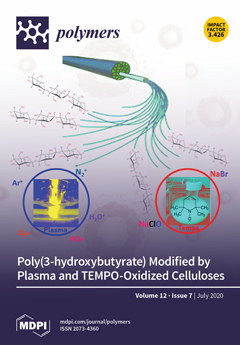Starches were extracted from chickpea (C.P.), corn (C.S.), Turkish bean (T.B.), sweet potato (S.P.S.), and wheat starches (W.S.). These starches exhibited different amylose contents. The extracted starches were annealed in excess water and in germinated sorghum extract (GSE) (1.0 g starch/9 mL water).
[...] Read more.
Starches were extracted from chickpea (C.P.), corn (C.S.), Turkish bean (T.B.), sweet potato (S.P.S.), and wheat starches (W.S.). These starches exhibited different amylose contents. The extracted starches were annealed in excess water and in germinated sorghum extract (GSE) (1.0 g starch/9 mL water). The α-amylase concentration in the GSE was 5.0 mg/10 mL. Annealing was done at 40, 50, and 60 °C for 30 or 60 min. The pasting properties of annealed starches were studied using Rapid Visco-Analyzer (RVA), in addition to the swelling power. These starches exhibited diverse pasting properties as evidenced by increased peak viscosity with annealing, where native starches exhibited peak viscosity as: 2828, 2438, 1943, 2250, and 4601 cP for the C.P., C.S., T.B., W.S., and S.P.S., respectively, which increased to 3580, 2482, 2504, 2514, and 4787 cP, respectively. High amylose content did not play a major role on the pasting properties of the tested starches because sweet potato starch (S.P.S.) (22.4% amylose) exhibited the highest viscosity, whereas wheat starch (W.S.) (25% amylose) had the least. Therefore, the dual effects of granule structure and packing density, especially in the amorphous region, are determinant factors of the enzymatic digestion rate and product. Swelling power was found to be a valuable predictive tool of amylose content and pasting characteristics of the tested starches. The studied starches varied in their digestibility and displayed structural differences in the course of α-amylase digestion. Based on these findings, W.S. was designated the most susceptible among the starches and S.P.S. was the least. The most starch gel setback was observed for the legume starches, chickpeas, and Turkish beans (C.P. 2553 cP and T.B. 1172 cP). These results were discussed with regard to the underlying principles of swelling tests and pasting behavior of the tested starches. Therefore, GSE is an effortless economic technique that can be used for starch digestion (modification) at industrial scale.
Full article






